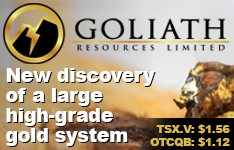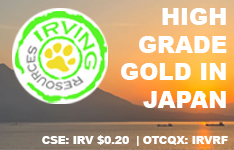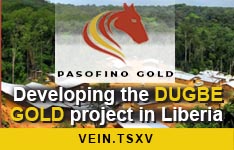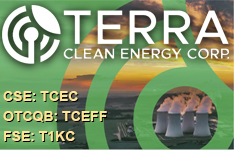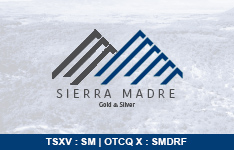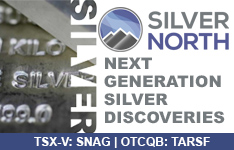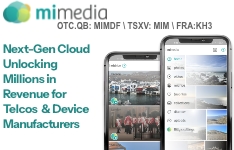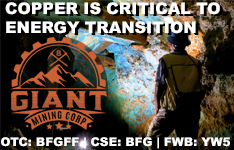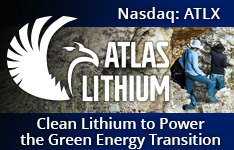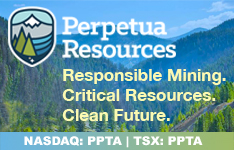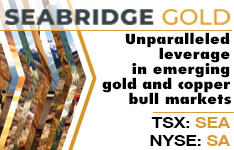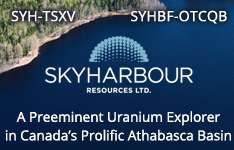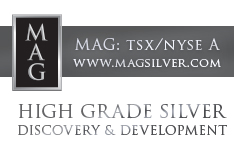Perpetua Resources Corp. (PPTA:TSX; PPTA:NASDAQ) has formally submitted an application to the Export-Import Bank of the United States (EXIM) requesting up to US$2 billion in debt financing to advance construction of the Stibnite Gold Project in Idaho. The filing follows the company’s receipt of its final federal permit and builds on a non-binding US$1.8 billion Letter of Interest that EXIM previously issued in April 2024. According to Perpetua, the increase in requested funding reflects updated financial estimates that account for a greater number of projected job-years based on recent basic engineering work and a financial model update released in the first quarter of 2025.
The Stibnite Gold Project is positioned to become the only domestic source of mined antimony, a critical mineral used in national defense and clean energy applications. In a company news release, CEO Jon Cherry described the site as “a national strategic asset for domestic antimony production” and noted that EXIM financing “could play a pivotal role in advancing the Project to production.”
Perpetua’s application is now subject to EXIM’s due diligence and underwriting process. If approved, the EXIM funding could cover a majority of the development costs for Stibnite, which carries an initial capital expenditure estimate of US$2.2 billion. The project is one of the few in the United States that has cleared all major federal permitting milestones, including a Clean Water Act Section 404 permit issued by the U.S. Army Corps of Engineers in May 2025.
The EXIM submission aligns with recent U.S. government efforts to shore up supply chains for critical minerals. In 2024, China restricted antimony exports, intensifying concerns over U.S. dependence on foreign sources. The Stibnite project represents a potential domestic solution, expected to supply an average of approximately 35% of annual U.S. demand for antimony over its first six years of production.
In addition to supporting national security, the project also features one of the largest independent gold reserves in the lower 48 states, with 4.8 million ounces of proven and probable reserves. Average gold production is projected at 460,000 ounces annually in the first four years, with an all-in sustaining cost of US$435 per ounce during that early period, according to the company’s financial update. Environmental restoration is a central component of the plan, including reprocessing legacy mine tailings and restoring fish habitats blocked for decades.
Gold Sector Strengthens on Global Uncertainty
The gold sector experienced heightened momentum in late May as global financial and geopolitical risks drove demand for safe-haven assets. According to Kitco on May 21, gold futures gained US$98 over a three-day stretch, with the most active June 2025 contract closing at US$3,319.10. The gains were attributed to increased investor anxiety surrounding potential Israeli military action against Iranian nuclear facilities. Kitco reported that “the chance of an Israeli strike on an Iranian nuclear facility has gone up significantly in recent months,” leading market participants to favor traditional safe-haven assets like gold.
FX Empire added further context in a May 22 report, noting that gold surged to US$3,345 during Asian trading as concerns over U.S. fiscal policy and a weakening dollar spurred demand. The report stated, “Gold rose for a fourth consecutive session… amid deepening concerns over U.S. fiscal stability and a weaker U.S. dollar.” This followed Moody’s downgrade of the U.S. sovereign credit rating to Aa1, citing long-term debt sustainability risks. The downgrade, coupled with a weak 20-year bond auction and a projected US$3 trillion to US$5 trillion increase in the federal deficit, contributed to a broader shift into precious metals.
Stockhead reported on May 22 that the impact of these developments extended into equity markets, with gold stocks supporting Australia’s ASX index. While the ASX fell 0.45% overall, the All Ordinaries Gold index climbed 3.31% after rising nearly 5% the previous day. The publication noted that “our resources sector was the only one in the green,” and emphasized that gold’s upward movement offered a measure of stability in an otherwise cautious market environment.
On May 23, Bloomberg highlighted additional geopolitical and market-based pressures, stating that “one of the biggest beneficiaries of that U.S. tariff announcement is going to be gold,” alongside other safe-haven currencies. The commentary underscored gold’s resilience amid rising protectionism and volatility in U.S. equities, particularly in high-beta sectors.
Analysts Highlight Federal Backing and Valuation Potential
In an April 23 report, Mike Niehuser of ROTH Capital Partners noted that Perpetua Resources’ Stibnite project had been added to the U.S. Permitting Council’s list of key mineral initiatives, reinforcing its strategic role in domestic supply chains. Niehuser stated that although the company received a Final Record of Decision in January 2025, its inclusion on the list demonstrated the administration’s support as Perpetua moved through the Export-Import Bank of the United States (EXIM) financing process. He identified this federal designation as a core element of ROTH’s investment thesis.
ROTH Capital maintained a Buy rating on Perpetua and reiterated its US$19 price target, which represented a 43% upside from the company’s share price at the time. Niehuser highlighted that Perpetua had already secured approximately US$75 million in federal funding and had received a letter of interest from EXIM outlining potential debt financing of up to US$1.8 billion. He added that “the series of Executive Orders and inclusion on the Permitting Council’s list suggest that EXIM should fully review Perpetua’s formal application,” and pointed to the Clean Water Act 404 permit and financing finalization as potential near-term catalysts.
Cantor Fitzgerald reaffirmed its positive outlook on May 20 following the company’s receipt of the final federal permit required to construct the Stibnite Gold Project. Analyst Mike Kozak called the permit issuance a major milestone, marking the end of an eight-year interagency process. Kozak reported that only two minor state permits remained, after which the project would be “shovel ready.”
He noted that Perpetua was expected to formally submit its application to EXIM shortly, following the previously issued April 2024 letter of interest for up to US$1.8 billion in potential debt financing. He referenced the project's updated capital expenditure estimate of US$2.2 billion, disclosed on February 14, 2025.
Cantor Fitzgerald reiterated a Buy rating and US$22 price target on Perpetua shares, reflecting a 72% potential return based on the share price at the time of the report. The valuation was based on a 0.8 times NAVPS multiple at a 7.5% discount rate. Kozak described Stibnite as one of the largest undeveloped gold projects in the United States and highlighted the added value of the project’s antimony by-product, which is classified as a critical mineral. He concluded that Perpetua was well-positioned to attract a joint-venture partner given the project’s scale and strategic importance.
Unlocking the Potential: Key Catalysts Ahead for Perpetua Resources
According to its March 2025 investor presentation, the project is expected to yield a 15-year mine life with an after-tax net present value of US$3.65 billion at a gold price of US$2,900 per ounce. Following the final federal approval in January 2025, the company is pursuing ancillary state permits and seeking to finalize project financing during the first half of the year. A formal construction decision is anticipated later in 2025, with operations targeted to commence in 2028.
As detailed in the presentation, Perpetua’s strategy includes transforming the historically impacted Stibnite site into a productive and sustainable operation. The company aims to deliver an average of 296,000 ounces of gold annually over a 15-year mine life while recovering approximately 107 million pounds of antimony. At consensus pricing, the project carries an after-tax net present value of US$1.4 billion at a 5% discount rate, with an internal rate of return of 15.4% and a projected payback period of just over three years.
The Stibnite Gold Project is also notable for its low projected cash costs, estimated at US$217 per ounce of gold in the early production years, supported in part by an antimony by-product credit of US$220 per ounce over the life of the mine. These cost metrics position Stibnite among the lowest-cost gold operations in the U.S., according to data cited in the company’s technical reports.
Backed by approximately US$75 million in critical minerals funding from the U.S. Department of Defense, including awards under the Defense Production Act and related programs, Perpetua has advanced the project through more than eight years of permitting and technical development. As Perpetua continues to progress, the next set of decisions on permits and financing will be pivotal in transitioning this strategic asset from planning into production.
Ownership and Share Structure
Streetwise Ownership Overview*
Perpetua Resources Corp. (PPTA:TSX; PPTA:NASDAQ)
According to Refinitiv, management and insiders own approximately 0.50% of Perpetua.
Institutions own about 63.52%. Top institutional shareholders include Paulson & Co. with 35.08%, Sun Valley Gold LLC with 4.2%, Sprott Asset Management LP with 4.16%, Kopernik Global Investors LLC with 3.05% and Sprott Asset Management USA Inc. with 3.41%. The rest is in retail.
Perpetua has 70.61 million (70.61M) outstanding shares and 69.97M free float traded shares. Its market cap is CA$937.13M. Its 52-week range is CA$6.80–CA$19.72 per share.
| Want to be the first to know about interesting Gold investment ideas? Sign up to receive the FREE Streetwise Reports' newsletter. | Subscribe |
Important Disclosures:
- Perpetua Resources Corp. is a billboard sponsor of Streetwise Reports and pays SWR a monthly sponsorship fee between US$4,000 and US$5,000.
- James Guttman wrote this article for Streetwise Reports LLC and provides services to Streetwise Reports as an employee.
- This article does not constitute investment advice and is not a solicitation for any investment. Streetwise Reports does not render general or specific investment advice and the information on Streetwise Reports should not be considered a recommendation to buy or sell any security. Each reader is encouraged to consult with his or her personal financial adviser and perform their own comprehensive investment research. By opening this page, each reader accepts and agrees to Streetwise Reports' terms of use and full legal disclaimer. Streetwise Reports does not endorse or recommend the business, products, services or securities of any company.
For additional disclosures, please click here.







